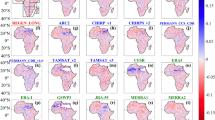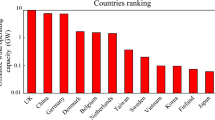Abstract
The advancement of the machine learning (ML) models has demonstrated notable progress in geosciences. They can identify the underlying process or causality of natural hazards. This article introduces the development and verification procedures of a new hybrid ML model, namely Bat-ELM for predictive drought modelling. The multi-temporal standardized precipitation evapotranspiration index (SPEI-3 and SPEI-6) is computed as the meteorological drought index at two study regions (Beypazari and Nallihan), located in Ankara province, Turkey. The proposed hybrid model is obtained by integrating the Bat optimization algorithm as the parameter optimizer with an extreme learning machine (ELM) as the regressor engine. The efficiency of the intended model was evaluated against the classic artificial neural network (ANN) and standalone ELM models. The evaluation and assessment are conducted using statistical metrics and graphical diagrams. The forecasting results showed that the accuracy of the proposed model outperformed the benchmark models. In a quantitative assessment, the Bat-ELM model attained minimal root mean square error for the SPEI-3 and SPEI-6 (RMSE = 0.58 and 0.43 at Beypazari station and RMSE = 0.53 and 0.37 at Nallihan station) over the testing phase. This indicates the new model approximately 20 and 15% improves the forecasting accuracy of traditional ANN and classic ELM techniques, respectively.







Similar content being viewed by others
References
Aghelpour P, Mohammadi B, Mehdizadeh S, Bahrami-Pichaghchi H, Duan Z (2021) A novel hybrid dragonfly optimization algorithm for agricultural drought prediction. Stoch Environ Res Risk Assess. https://doi.org/10.1007/s00477-021-02011-2
Ahmadalipour A, Moradkhani H, Demirel MC (2017) A comparative assessment of projected meteorological and hydrological droughts: elucidating the role of temperature. J Hydrol 553:785–797. https://doi.org/10.1016/j.jhydrol.2017.08.047
Ahmadi F, Mehdizadeh S, Mohammadi B (2021) Development of bio-inspired-and wavelet-based hybrid models for reconnaissance drought index modeling. Water Resour Manage 35(12):4127–4147. https://doi.org/10.1007/s11269-021-02934-z
Ahmadianfar I, Adib A, Salarijazi M (2016) Optimizing multireservoir operation: hybrid of bat algorithm and differential evolution. J Water Resour Plan Manag 142(2):05015010
Alizamir M, Heddam S, Kim S, Mehr AD (2021) On the implementation of a novel data-intelligence model based on extreme learning machine optimized by bat algorithm for estimating daily chlorophyll-a concentration: Case studies of river and lake in USA. J Clean Product 285:124868
Atiquzzaman M, Kandasamy J (2016) Prediction of hydrological time-series using extreme learning machine. J Hydroinform 18(2):345–353
Bacanli UG, Firat M, Dikbas F (2009) Adaptive neuro-fuzzy inference system for drought forecasting. Stoch Env Res Risk Assess 23:1143–1154. https://doi.org/10.1007/s00477-008-0288-5
Barua S, Ng AWM, Perera BJC (2012) Artificial neural network-based drought forecasting using a nonlinear aggregated drought index. J Hydrol Eng 17:1408–1413. https://doi.org/10.1061/(asce)he.1943-5584.0000574
Beguería S, Vicente-Serrano SM, Reig F, Latorre B (2014) Standardized precipitation evapotranspiration index (SPEI) revisited: parameter fitting, evapotranspiration models, tools, datasets and drought monitoring. Int J Climatol 34(10):3001–3023
Beyaztas U, Yaseen ZM (2019) Drought interval simulation using functional data analysis. J Hydrol 579:124141. https://doi.org/10.1016/j.jhydrol.2019.124141
Bhalme HN, Mooley DA (1980) Large-scale droughts/floods and monsoon circulation. Mon Weather Rev 108:1197–1211
Crausbay SD, Ramirez AR, Carter SL, Cross MS, Hall KR, Bathke DJ, Sanford T (2017) Defining ecological drought for the twenty-first century. Bull Am Meteor Soc 98(12):2543–2550
Danandeh Mehr A (2021) Drought classification using gradient boosting decision tree. Acta Geophys 69:909–918
Danandeh Mehr A, Kahya E, Özger M (2014) A gene-wavelet model for long lead time drought forecasting. J Hydrol 517:691–699. https://doi.org/10.1016/j.jhydrol.2014.06.012
Danandeh Mehr A, Rikhtehgar Ghiasi A, Yaseen ZM et al (2022) A novel intelligent deep learning predictive model for meteorological drought forecasting. J Ambient Intell Human Comput. https://doi.org/10.1007/s12652-022-03701-7
Danandeh Mehr A, Vaheddoost B (2020) Identification of the trends associated with the SPI and SPEI indices across Ankara. Turk Theor Appl Climatol 139(3):1531–1542
Darudi A, Rezaeifar S, and Bayaz M H J D (2013) Partial mutual information based algorithm for input variable selection for time series forecasting. in 2013 13th international conference on environment and electrical engineering (EEEIC)(pp 313–318) IEEE
Dehghani M, Saghafian B, Nasiri Saleh F, Farokhnia A, Noori R (2014) Uncertainty analysis of streamflow drought forecast using artificial neural networks and Monte-Carlo simulation. Int J Climatol 34(4):1169–1180
Deo RC, Tiwari MK, Adamowski JF, Quilty JM (2016) Forecasting effective drought index using a wavelet extreme learning machine (W-ELM) model. Stoch Env Res Risk Assess 31:1–30. https://doi.org/10.1007/s00477-016-1265-z
Dikici M (2020) Drought analysis with different indices for the Asi Basin (Turkey). Sci Rep 10(1):1–12
Dong L, Zeng W, Wu L, Lei G, Chen H, Srivastava AK, Gaiser T (2021) Estimating the pan evaporation in Northwest China by coupling catboost with bat algorithm. Water 13(3):256
Durdu ÖF (2010) Application of linear stochastic models for drought forecasting in the Büyük Menderes river basin, western Turkey. Stoch Env Res Risk Assess 24:1145–1162. https://doi.org/10.1007/s00477-010-0366-3
Fraser AM, Swinney HL (1986) Independent coordinates for strange attractors from mutual information. Phys Rev A 33(2):1134
Fung KF, Huang YF, Koo CH, Soh YW (2019) Drought forecasting: a review of modelling approaches 2007–2017. J Water Clim Change. https://doi.org/10.2166/wcc.2019.236
Han Y, Wu J, Zhai B, Pan Y, Huang G, Wu L & Zeng W (2019) Coupling a bat algorithm with xgboost to estimate reference evapotranspiration in the arid and semiarid regions of China. Advances in Meteorology,2019
Hornik K, Stinchcombe M, White H (1989) Multilayer feedforward networks are universal approximators. Neural Netw 2(5):359–366
Huang GB, Zhu QY, Siew CK (2006) Extreme learning machine: theory and applications. Neurocomputing 70(1–3):489–501
Karavitis CA, Vasilakou CG, Tsesmelis DE, Oikonomou PD, Skondras NA, Stamatakos D, Fassouli V, Alexandris S (2015) Short-term drought forecasting combining stochastic and geo-statistical approaches. Eur Water 49:43–69
Karbassi A, Maghrebi M, Noori R, Lak R, Sadrinasab M (2020) Investigation of spatiotemporal variation of drought in Iran during the last five decades. Desert 25(2):213–226
Kaur A, Sood SK (2020) Deep learning based drought assessment and prediction framework. Eco Inform 57:101067
Keskin ME, Terzi Ö, Taylan ED, Küçükyaman D (2009) Meteorological drought analysis using data-driven models for the Lakes District, Turkey. Hydrol Sci J 54:1114–1124. https://doi.org/10.1623/hysj.54.6.1114
Kurnaz L (2014) Drought in Turkey. İstanbul Policy Center, Sabancı Üniversitesi-İstanbul
Li J, Wang Z, Wu X, Xu C. Y, Guo S, Chen X & Zhang Z (2021) Robust meteorological drought prediction using antecedent SST fluctuations and machine learning. Water Resources Research, 57(8) e2020WR029413
Mckee T.B, Doesken N.J, Kleist J, 1993 The relationship of drought frequency and duration to time scales. AMS 8th conference on applied climatology, 179–184 doi:citeulike-article-id:10490403
Mishra AK, Desai VR (2005) Drought forecasting using stochastic models. Stoch Env Res Risk Assess 19:326–339. https://doi.org/10.1007/s00477-005-0238-4
Mohapatra P, Chakravarty S, Dash PK (2015) An improved cuckoo search based extreme learning machine for medical data classification. Swarm Evol Comput 24:25–49
Mokhtarzad M, Eskandari F, Jamshidi Vanjani N, Arabasadi A (2017) Drought forecasting by ANN, ANFIS, and SVM and comparison of the models. Environ Earth Sci. https://doi.org/10.1007/s12665-017-7064-0
Morid S, Smakhtin V, Bagherzadeh K (2007) Drought forecasting using artificial neural networks and time series of drought indices. Int J Climatol 27:2103–2111. https://doi.org/10.1002/joc.1498
Mouatadid S, Raj N, Deo RC, Adamowski JF (2018) Input selection and data-driven model performance optimization to predict the Standardized Precipitation and Evaporation Index in a drought-prone region. Atmos Res 212:130–149
Nourani V, Molajou A (2017) Application of a hybrid association rules/decision tree model for drought monitoring. Glob Planet Chan 159:37–45
Özger M, Mishra AK, Singh VP (2011) Long lead time drought forecasting using a wavelet and fuzzy logic combination model: a case study in texas. J Hydrometeorol 13:284–297. https://doi.org/10.1175/jhm-d-10-05007.1
Palmer WC (1965) Meteorological Drought. Weather Bureau, Res. Pap. No, U.S, p 45
Rezaie-Balf M, Fani Nowbandegani S, Samadi SZ, Fallah H, Alaghmand S (2019) An ensemble decomposition-based artificial intelligence approach for daily streamflow prediction. Water 11(4):709
Shen R, Huang A, Li B, Guo J (2019) Construction of a drought monitoring model using deep learning based on multi-source remote sensing data. Int J Appl Earth Obs Geoinf 79:48–57
Soh YW, Koo CH, Huang YF, Fung KF (2018) Application of artificial intelligence models for the prediction of standardized precipitation evapotranspiration index (SPEI) at Langat River Basin, Malaysia. Comput Electron Agri 144:164–173. https://doi.org/10.1016/j.compag.2017.12.002
Stagge JH, Tallaksen LM, Xu CY, Van Lanen HA (2014) Standardized precipitation-evapotranspiration index (SPEI): Sensitivity to potential evapotranspiration model and parameters. In Hydrol Chang World 363:367–373
Su L, Yang K, Hu H, Yang Z (2019) Long-term hydropower generation scheduling of large-scale cascade reservoirs using chaotic adaptive multi-objective bat algorithm. Water 11(11):2373
Task Committee on Application of Artificial Neural Networks in Hydrology ASCE (2000) Artificial neural networks in hydrology. II: Hydrologic applications. J Hydrol Eng 5(2):124–137
Tirivarombo S, Osupile D, Eliasson P (2018) Drought monitoring and analysis: standardised precipitation evapotranspiration index (spei) and standardised precipitation index (SPI). Phys Chem Earth. https://doi.org/10.1016/j.pce.2018.07.001
Torabi AH, Abou Zaki N, Rossi PM, Noori R, Hekmatzadeh AA, Saremi H, Kløve B (2020) Unsustainability syndrome—from meteorological to agricultural drought in arid and semi-arid regions. Water 12(3):838
Tsakiris G, Vangelis HJEW (2005) Establishing a drought index incorporating evapotranspiration. Eur Water 9(10):3–11
Turkes M (2020) Climate and drought in turkey in: Harmancioglu N, Altinbilek D. (eds) Water Resources of Turkey World Water Resources, vol 2. Springer, Cham https://doi.org/10.1007/978-3-030-11729-0_4
Vicente-Serrano SM, Beguería S, López-Moreno JI (2010) A multiscalar drought index sensitive to global warming: the standardized precipitation evapotranspiration index. J Clim 23:1696–1718. https://doi.org/10.1175/2009JCLI2909.1a
Yang XS (2010) A new metaheuristic bat-inspired algorithm. In Nature inspired cooperative strategies for optimization (NICSO 2010). Springer, Berlin, Heidelberg, pp. 65–74
Yaseen ZM, El-shafie A, Jaafar O, Afan HA, Sayl KN (2015) Artificial intelligence based models for stream-flow forecasting: 2000–2015. J Hydrol 530:829–844. https://doi.org/10.1016/j.jhydrol.2015.10.038
Yaseen ZM, Ali M, Sharafati A, Al-Ansari N, Shahid S (2021) Forecasting standardized precipitation index using data intelligence models: regional investigation of Bangladesh. Sci Rep 11(1):1–25
Zargar A, Sadiq R, Naser B, Khan FI (2011) A review of drought indices. Environ Rev. https://doi.org/10.1139/a11-013
Acknowledgements
We thank the Turkish State of Meteorological Service for the meteorological data used in this study.
Author information
Authors and Affiliations
Corresponding author
Ethics declarations
Conflict of interest
The authors declare no conflict of interest to any part.
Additional information
Communicated by Dr. Michael Nones (CO-EDITOR-IN-CHIEF).
Rights and permissions
About this article
Cite this article
Gholizadeh, R., Yılmaz, H. & Danandeh Mehr, A. Multitemporal meteorological drought forecasting using Bat-ELM. Acta Geophys. 70, 917–927 (2022). https://doi.org/10.1007/s11600-022-00739-1
Received:
Accepted:
Published:
Issue Date:
DOI: https://doi.org/10.1007/s11600-022-00739-1




